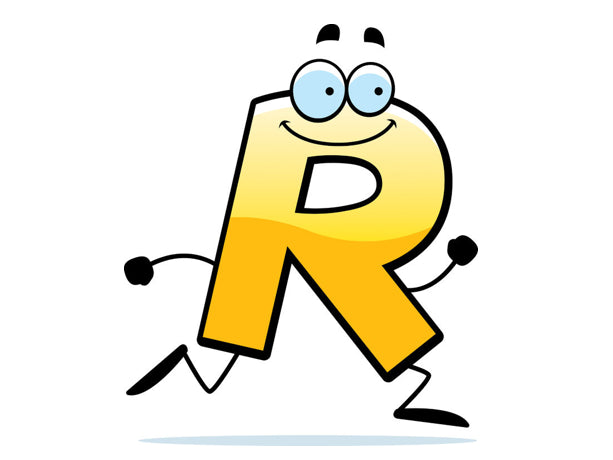
On a Personal Note…
Thank you so much for your great recommendations for podcast guests! You all are amazing! You gave me many excellent suggestions. I’m continuing to do podcast-prep and if you come up with other referrals, feel free to submit them; there’s no deadline date. My podcast—The Speech Link—starts in July. I’ll keep you posted! Thanks, again!
Also, I’ll be taking a break from writing regular Therapy Matters posts from June 5 to July 24. I’ll be working on the podcasts throughout the month of June, and then in July I’ll start writing a book on “S” therapy.
Over the past few weeks, I’ve spoken with several dedicated therapists desperate to remediate an entrenched /r/. Not long ago, I posted three Therapy Matters on r-remediation. I know it’s a lot to cover! In this post, I’ll clarify some of the previous info and add new strategies, as well—hope they help.
The following focuses on the /r/, but the strategies can be modified and applied to any speech sound therapy.
1. Build oral-capability FIRST. Explain to the child and parent that the first several weeks of therapy is “pre-season” training. (Like baseball or football training camp.) The focus is to get their mouth in shape and ready to produce the /r/ sound.
The Rationale: Always keep in mind, the /r/ is a resonance sound and production components are different from other consonant speech sounds (“s”, “sh”, even “l”, etc.). The /r/ production goes way beyond “put your tongue here and move the air through.”
The /r/ is comprised of back-tongue retromolar placement (for the back-up /r/ and the retroflex /r/), lingual tension, and the shaping of an /r/ resonance chamber (plus phonation and air).
The /r/ sound is created within a semi-enclosed space; the walls of the space are “tight.” There has to be tension within the tongue (the walls), or there’s no /r/.
In therapy, segment the components first (building capability over time), then combine them; deliberately and simultaneous layer the components. Focus on the feel not the sound.
If you have the book, The Easy R, go through the lessons step-by-step—especially the first five capability-building lessons. Take as long as you need on this section (as in, weeks). Do the tasks and be sure to BUILD ORAL CAPABILITY, not merely do the tasks and check them off the list. The abilities must soak in. In lesson six, they MUST generate a good, consistent, clear /r/. Don’t move on to lesson seven until they do. (Lesson six contains tons of r-stim techniques.)
If you don’t have the book, do capability building tasks that lead to
- Correct and consistent retromolar placement (make sure the back side-tongue corners are in place; place your fingers on the child’s throat to feel back-tongue elevation),
- Capability, control and awareness of lingual tension contrasted with lingual relaxation, and
- The ability to simultaneously contract, retract, and elevate their tongue, and hit and hold the tongue on the retromolar pads CONSISTENTLY and EFFORTLESSLY.
In most kids, if this doesn’t take place, you’ll be working on placement a loooong time. They’ll continue to round their lips, trying like crazy to generate a front resonance chamber. Direct them to the back of their mouth. If their lips continue to round, motivating the air to move straight through, you’ll consistently get that frustrating, distorted sound.
2. Take your time. During therapy sessions, take it slow so the child understands—cognitively and physiologically. Give them numerous opportunities to try, do, and replicate each task, i.e., the capability-building tasks, the /r/ stim tasks, and the solidification tasks.
Focus intra-orally, feel the tongue, and repeat; a new placement takes time. From explaining and showing, to applying sensory input; each therapy step takes time. Don’t rush. Repeat, repeat, repeat. Building oral capability is not a fancy form of sound-stim.
- YOU describe the details and steps as to what their mouth needs to do.
- Ask THEM to tell you and show you what their mouth needs to do.
- Ask them to show you with their hand-tongue what their tongue needs to do.
- Ask them to close their eyes and do it. And, again. And, again.
When you do get to the /r/ sound stim phase, continue to be thorough, slow, and methodical. It’s risky business; although they have developed new-found capabilities, the old motoric patterns are still easier and more familiar.
3. When stimming or practicing the /r/ sound, de-emphasize the sound-of-the-sound and emphasize the feel of oral placement and tension.De-emphasize, “Now, listen to me say the sound /rrrrrr/. Now you; say it just like me.” I firmly believe: If they could, they would. Unless re-directed, they will continue to do their familiar oral pattern.In addition, we all know that many kids cannot discern the auditory difference between their distorted /r/ production and their good /r/ production (if they have one). Therefore, build their oral capability: Emphasize the /r/ stabilization placement, lingual tension, and the formation of the resonance chamber.
4. Use sensory input to generate awareness and the new, unfamiliar motor patterns.Yes, I’m aware that oral-motor has been poo-pooed. But I’m hard-pressed to come up with a way to generate a difference in oral movement and placement without focusing on the mouth. After all, the mouth is the source of speech. Sounds and speech sounds are a result of the contours and tensions within the oral mechanism. Just focusing on the auditory component is not enough for some kids.Changing establish oral movement patterns requires oral awareness.
No matter how hard you try to see your own mouth, you’ll never be able to see it first-hand, ever. Therefore, the use of visual oral feedback, unlike viewing your hand while writing, is out. There are only two forms of sensory feedback available to the mouth: tactile feedback and proprioceptive feedback. Unless, you permanently hold a mirror up to the kid’s mouth and have him open, tactile and proprioception is all you’ve got. Use them.
- “Close your eyes and send a spy down to your mouth.”
- “Focus and feel your tongue.”
- Although the use of a mirror is not the greatest for /r/, it’s really helpful to see, compare, and contrast, a tight tongue and a loose tongue. Then, take away the mirror, and have them do tension and laxness only through their lingual proprioception.
- Use oral tools (and flavoring to make the tools more enjoyable) to touch and localize mouth-parts (e.g., the back-tongue-corners on the retromolar pads). Push against a tongue depressor or stroke the sides of the tongue to stimulate lingual tension, etc.
- Touch their throat/neck area to confirm back-tongue elevation; have them feel, too.
5. Intra-oral sensation. After 30+ years of first-hand experience observing and working with hundreds of r-kids, I view this component as a critical missing piece in our /r/ therapy.
What am I talking about? The quality of the child’s intra-oral sensory feedback. In other words, during oral movement and contraction, is he/she receiving accurate intra-oral tactile sensory feedback? As a therapist, I cannot assume that all my kids perceive all intra-oral sensations normally. I know, sensation is abstract and difficult to grasp. But think about it, the condition and quality of other sensory systems, such as hearing and vision, certainly vary. We do hearing testing. What about testing the sensory component of the mouth?
We do know that the mouth is a sensory machine; it has the greatest and most varies sensory abilities of any body-part. It senses temperature, pain, taste, touch, and is aware of spatial differences (proprioceptive awareness). For speech, I only care about the last two. But here’s the kicker: If I—and the child—are to successfully utilize #4 (the child’s intra-oral sensory feedback system), I had better determine that his intra-oral sensory capability is within normal limits.
How do you determine this? It’s not easy, but we can come close. Check out an r-kid yourself. Buy some untreated Toothettes (Amazon.com is good) and do progressive palpation from the front of the tongue to the back (the pharynx). Unlike you and me, even thinking of touching “the back” makes us cringe. Not so with our r-kids. Many will not only allow you to palpate their back-tongue but will be just fine with you bouncing the Toothette off their pharyngeal wall.
A high-percentage of r-kids have a low-to-no gag response. For example, two years ago in my speech club, I had 15 kids; 14 of them were /r/-kids. Thirteen of the 14 were hypo-sensitive in their oral posterior region. When I palpated the back of each child’s mouth, I wanted to gag—they didn’t.
So, what do we do in therapy? Well, intra-oral touch is all we’ve got.
With a Toothette, start on the front-tongue and palpate to the back. Do fairly-firm press-releases; do not slide the Toothette. Once in gag-territory (in the pharyngeal area), continue to do at least 4 to 5 press-releases. Do this fairly quickly (about 2 press-releases per second). Take out the Toothette so they can swallow. In other words, do repeated-touches in the back. Do at least five repetitions; 3 sets (total of 15). Do this for at least 2 to 3 weeks.
This sensory-task has helped many of my r-kids zero-in on their back-tongue, do and benefit from the capability tasks, and ultimately, get and use a really good /r/!
If you have additional questions or comments, feel free to contact me! I love talking with you about your kids!
Have a great week!
Char
Leave a comment (all fields required)
Comments will be approved before showing up.

![#71 Telepractice Tips 'n Info (Part 4) [Is my child working or just playing games?]](http://speechdynamics.com/cdn/shop/articles/Game_Pieces_and_Hand_7_x_3_2048x.jpg?v=1605804364)